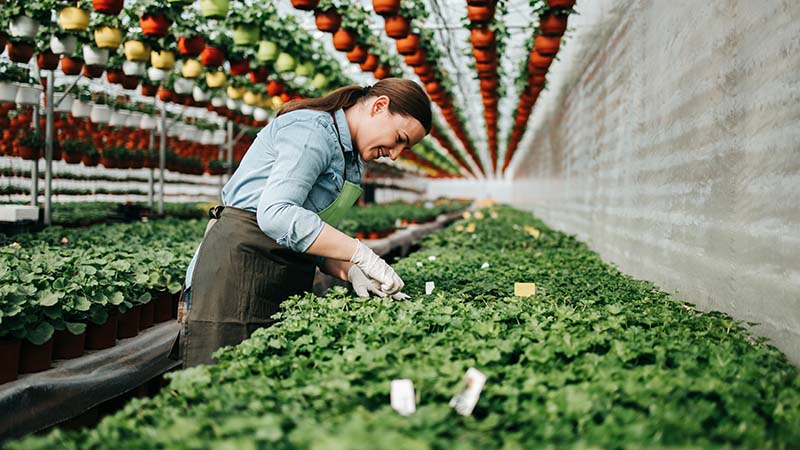Spring Greenhouse Disease and Insect Management Advice
Spring is a busy season in nurseries and greenhouses, and the variety of plant material in production during this time makes monitoring for a wide range of diseases difficult. Ensuring your crops are protected from propagation to shipping is essential, and a proven agronomic program can help set you up for a successful season.
According to crop experts at Syngenta, an agronomic program is a comprehensive plan that focuses on preventing common diseases and insects by providing a framework for rotating effective products and modes of action. This ensures you apply the right products at the right time while limiting the risk of developing resistance.
For example, Botrytis, a disease that is particularly problematic in the spring, is best managed preventively and by a rotation of products as it is highly susceptible to fungicide resistance. Follow an agronomic program during production and prior to storage and shipping to help protect your crops from Botrytis and other spring diseases to ensure their quality for sale.
A successful growing season is the result of careful planning and preparation. Stay ahead of problems with a preventive action plan that includes an agronomic program to help reduce outbreaks and plant injury.
Learn more from the team at Syngenta here.
Keep Aphids and Thrips Out of Your Production
Aphids and thrips are two of the most challenging insects in ornamental plant production. Along with the physical damage they can cause, some species can transmit plant viruses, leading to further plant damage. Prevention is the key to optimizing your control. If action is taken too late and populations have established, curative applications can be costly and unsuccessful.
Aphids have piercing-sucking mouthparts that they insert in the phloem and extract plant sap, which affects the overall vigor of plants. Both adults and nymphs can cause damage, which can include:
- Reduced leaf expansion
- Chlorotic spots on top sides of leaves
- Leaf discoloration or silvering
- Leaf loss
- Honeydew secretions that may result in black sooty mold on leaf surfaces
Thrips are tiny, elongated insects that are attracted to flowering plants and feed on pollen and flower petals. In the absence of flowers, they feed on other tender plant tissue such as young foliage and buds.
They scrape and pierce plant tissue, then suck out the sap and cellular contents from leaf tissue, flower buds and/or unexpanded shoot tips. This can cause leaf stippling (silvery streaking), scarring and distortion.
In addition to physical injury, several thrips species can transmit tospoviruses, such as impatiens necrotic spot virus (INSV) and tomato-spotted wilt virus (TMSV), which can quickly spread throughout the greenhouse.
Learn more here.








